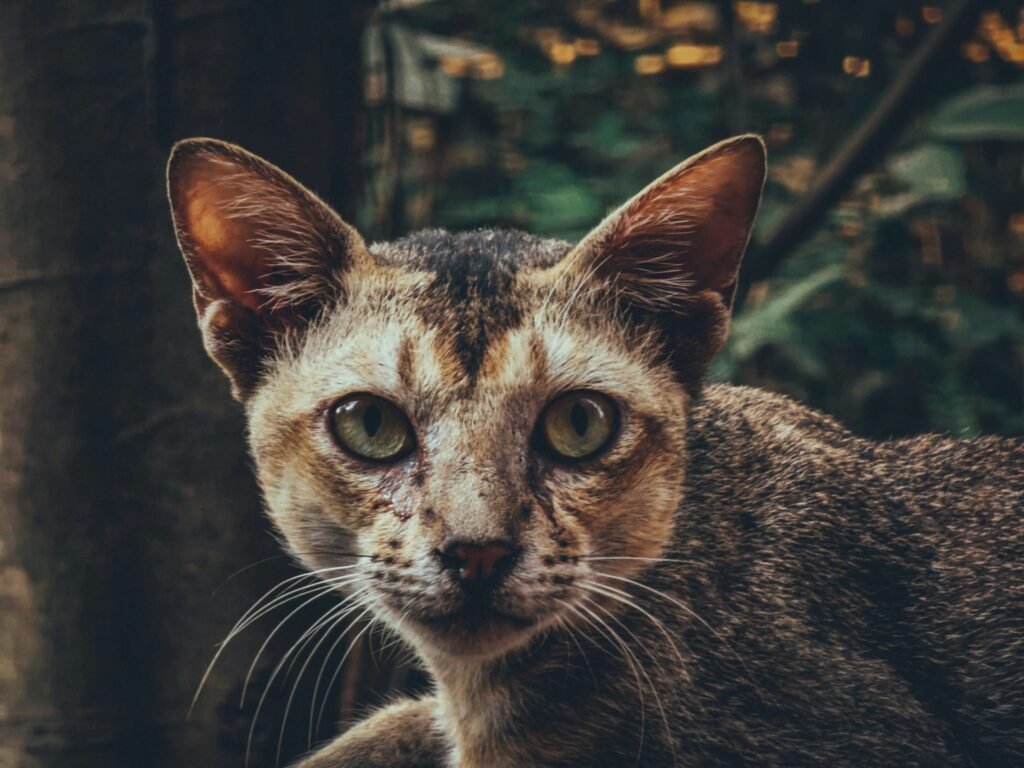What Does It Mean When a Cat Winks at You?
Cats are mysterious creatures, often leaving us wondering what they’re thinking or feeling. One of their most intriguing behaviors is the slow blink or wink—a gesture that can feel like a secret message just for you. But what does it really mean when your feline friend gives you that subtle wink? Is it a sign of affection, trust, or something else entirely? In this blog post, we’ll dive deep into the world of cat behavior to uncover the meaning behind this charming gesture. Whether you’re a lifelong cat owner or simply curious about these enigmatic animals, you’ll discover fascinating insights into the bond between humans and cats.
The Science Behind a Cat’s Wink
Before we explore the emotional side of a cat’s wink, let’s take a closer look at the science behind this behavior. Cats communicate in ways that go beyond meows and purrs, and their body language plays a crucial role in how they interact with the world around them. Understanding why cats wink can help deepen your connection with your furry companion.
A cat’s wink is often referred to as a “slow blink.”
This behavior is believed to be a sign of relaxation and contentment.
Studies suggest that cats use slow blinks to signal trust toward their human companions.
Unlike prolonged eye contact, which can be perceived as threatening, a slow blink is calming.
Cats may also use this gesture to communicate with other cats in their social group.
In essence, a cat’s wink is more than just a cute quirk—it’s a meaningful way for them to express their feelings.
Decoding the Meaning of a Cat’s Wink
Now that we’ve covered the basics, let’s break down what a cat’s wink might mean in different contexts. While every cat is unique, there are some common interpretations of this endearing behavior. Paying attention to the situation can help you better understand your cat’s intentions.
A wink during petting sessions may indicate happiness and enjoyment.
If your cat winks while lounging nearby, it could be a sign of trust and comfort.
Cats may wink to show they feel safe in their environment.
Some experts believe winking is a way for cats to mimic human expressions of affection.
In multi-cat households, a wink might serve as a non-verbal way to establish harmony.
By observing your cat’s body language and the context of their wink, you can gain valuable insights into their emotional state.
Check this guide 👉Why Does My Cat Sleep on Me? Best 7 Behavior Tips!
Check this guide 👉Why Do Cats Chase Their Tails? Best 7 Behavior Tips!
Check this guide 👉Why Does My Cat Sleep at My Feet? Best 7 Behavior Tips!

Behavior | Possible Meaning |
|---|---|
Slow blink | Trust and affection |
Prolonged eye contact | Potential threat or curiosity |
Tail flicking | Irritation or excitement |
Purring | Contentment or seeking comfort |
Rubbing against legs | Marking territory or showing attachment |
How to Respond to a Cat’s Wink
If your cat winks at you, it’s natural to wonder how you should respond. While there’s no one-size-fits-all answer, there are several thoughtful ways to acknowledge this gesture and strengthen your bond with your pet.
Return the slow blink to show your cat you understand their message.
Offer gentle pets or scratches behind the ears as a sign of affection.
Speak softly to reassure your cat that they’re in a safe space.
Avoid sudden movements or loud noises that might startle them.
Use positive reinforcement, like treats, to encourage this behavior.
Responding appropriately to your cat’s wink can enhance your relationship and create a deeper sense of mutual trust.
Fun Facts About Cat Communication
Cats have a rich repertoire of communication methods, and their winking is just one piece of the puzzle. Here are some intriguing facts about how cats express themselves and interact with the world.
Cats can make over 100 different sounds, compared to dogs, who only make about 10.
A cat’s tail position can reveal their mood, from happy (upright) to fearful (puffed up).
Meowing is primarily used by cats to communicate with humans, not other cats.
Cats use scent marking to claim ownership of their favorite spots—or people.
Kneading, or “making biscuits,” is a behavior rooted in kittenhood comfort.
These fun facts highlight the complexity of feline communication and remind us just how special our bond with cats truly is.
The Emotional Benefits of Cat Winks
A cat’s wink is not just a random behavior—it can have emotional benefits for both you and your feline friend. This subtle gesture fosters a sense of connection and reassurance, making it a heartwarming moment for any cat owner. Let’s explore how these winks can positively impact your relationship with your pet.
A cat’s wink can reduce stress by creating a calming atmosphere.
It reinforces the bond between you and your cat, strengthening trust over time.
Observing this behavior can bring joy and a sense of companionship to your day.
Cats who feel understood through their winks may exhibit more affectionate behaviors.
This gesture can help new cat owners feel more confident in their pet-parenting skills.
In conclusion, a cat’s wink is more than just a cute moment—it’s an opportunity to deepen your emotional connection and create lasting memories together.
Common Misconceptions About Cat Winks
While cat winks are often seen as positive gestures, there are some misconceptions about what they mean. Clearing up these misunderstandings can help you better interpret your cat’s behavior and respond appropriately. Here are a few myths debunked:
A cat’s wink doesn’t always mean they’re sleepy—it could simply indicate relaxation.
Winking isn’t exclusive to cats who are overly affectionate; even independent cats do it.
Not every blink is a wink—context matters when interpreting their intent.
Cats don’t wink out of boredom; it’s usually a sign of comfort or contentment.
A wink isn’t a request for food—it’s more about emotional communication.
By understanding these nuances, you can avoid misinterpreting your cat’s signals and appreciate their unique way of expressing themselves.
How to Encourage Positive Communication with Your Cat
Building a strong relationship with your cat involves encouraging open lines of communication. While winking is one way they express themselves, there are other ways to foster mutual understanding and trust. Here are some tips to enhance your interactions:
Spend quality time with your cat daily to build familiarity and comfort.
Use soft, slow movements to avoid startling them during bonding moments.
Learn to read their body language beyond winks, such as tail flicks or ear positions.
Reward calm and friendly behaviors with treats or praise to reinforce positivity.
Create a safe and stress-free environment where your cat feels secure.
By implementing these strategies, you’ll not only encourage more winks but also cultivate a deeper, more meaningful relationship with your feline companion.
FAQ
Why does my cat wink at me?
Your cat may wink at you to show trust, affection, or relaxation. It’s their way of saying they feel safe around you.
Is it normal for cats to wink?
Yes, winking—or slow blinking—is a completely normal behavior for cats and is often a positive sign.
Should I wink back at my cat?
Absolutely! Returning a slow blink can help reinforce your bond and let your cat know you understand their gesture.
Can all cats wink, or is it breed-specific?
All cats are capable of winking, regardless of breed. However, individual personalities may influence how often they display this behavior.
Does a cat’s wink always mean they’re happy?
While winking usually indicates contentment, context matters. Always consider your cat’s overall body language to interpret their mood accurately.
Strengthening the Bond with Your Feline Friend
Understanding what it means when a cat winks at you opens up a whole new world of communication between you and your furry companion. From expressing trust to signaling relaxation, this simple yet profound gesture reminds us of the unique connection we share with cats. By paying attention to their body language and responding thoughtfully, you can nurture a deeper bond and create a harmonious environment for both of you. So the next time your cat winks at you, take a moment to appreciate the silent dialogue unfolding—one slow blink at a time.
Understanding Cat Straining to Pee: Best 7 Health Tips! Discover causes, symptoms, and solutions for your cat's urinary issues. Act now!
Understanding Why Cats Arch Their Backs: Best 7 Expert Tips! Discover the reasons behind this fascinating behavior and how to interpret your cat's signals like a pro.
Why Is My Cat Staring at Me? Best 7 Behavior Tips! Discover the reasons behind your cat's intense gaze and learn how to decode their behavior effectively.
Why Does My Cat Stink? Best 7 Expert Tips! Discover common causes of cat odors and effective solutions to keep your feline friend fresh and healthy.





